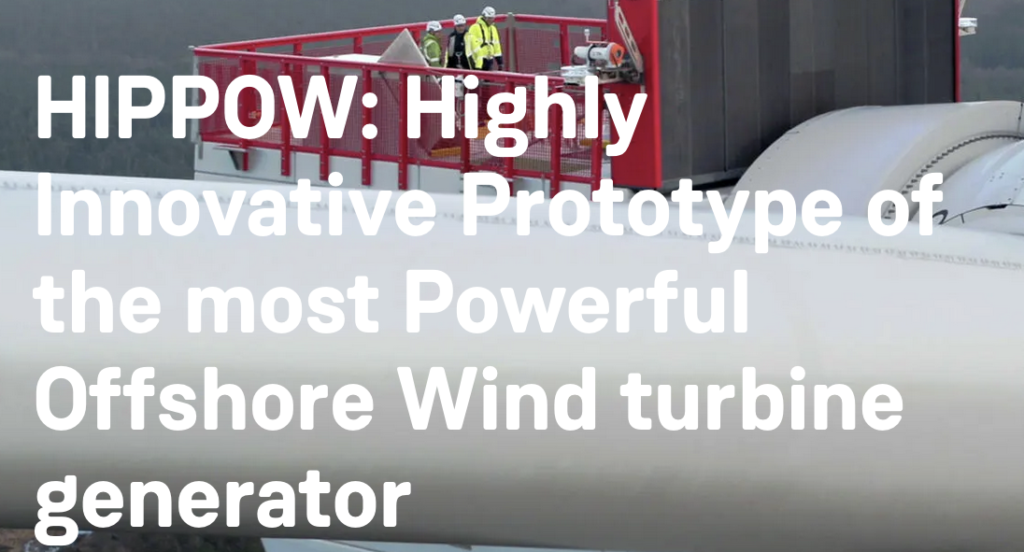
Sign up for daily news updates from CleanTechnica on email. Or follow us on Google News!
If President Trump is really determined to achieve so-called US “energy dominance,” he could start by supporting a growing web of domestic manufacturers aimed at tapping into the nation’s massive offshore wind energy potential. Unfortunately, that ship has sailed. Other nations are more than willing to pick up the offshore ball and run with it, leaving the US and its “energy dominance” behind in the dust.
Siemens Gamesa’s Very Big Offshore Wind Turbine
Those who are wondering why Trump exhibits such an aggressive fear of wind energy need only observe what happens to his hair on a windy day. There are other reasons, of course. Take golf, for example.
Regardless of the reason, when Trump ordered a stop to offshore federal lease activity upon taking office on January 20, he all but stopped the US offshore wind industry in its tracks, with a consequent impact on stakeholders in the industry’s 40-state supply chain as well as the wind developers themselves.
Meanwhile, global offshore wind stakeholders can always take their business elsewhere, and they are, bigly.
One particularly significant example is the HIPPOW turbine prototype project under the wing of Siemens Gamesa, supported by a European Union Innovation Fund grant of €30m (about US$33 million).
HIPPOW is short for “Highly Innovative Prototype of the most Powerful Offshore Wind turbine generator,” as explained by the Innovation Fund. Although the capacity of the turbine is something of a secret, on February 6 Siemens Gamesa dropped a photo of the company’s new SG DD-276 prototype under construction in Denmark to Recharge News, which suggests that it will weigh in at 21.5 gigawatts.
“The prototype will be the first of a kind due to its size and power rating, as well as the disruptive innovations implemented both in the product and in the installation process,” Siemens-Gamesa explains. They list new technologies covering nominal power, bearings, electrical system, installation of blades and tower, cooling system, and maintenance strategy, among others.
“The HIPPOW project will deliver the installation, operation, and testing of the world’s most powerful offshore wind turbine prototype,” the company emphasizes, noting that the prototype represents a milestone towards full-scale production.
Whoops, There Goes The US Offshore Wind Supply Chain
By full-scale production, Siemens Gamesa doesn’t just mean one factory. They mean a network of EU manufacturing plants in multiple countries, aimed at “the creation of new jobs, contributing to the economic growth of Europe and ultimately benefiting the wider economy.”
They also mean a sprawling network of goods and services to support the turbine factories. Too bad the US is missing out.
The day after Trump won election in November, the offshore wind advocacy organization Oceantic Network tried to draw his attention to the growing offshore wind supply chain in the US, which sprawls over red and blue states alike.
In a public statement on November 6, Oceantic Network Liz Burdock took a look back at Trump’s first term in office, when his own administration put the finishing touches on a streamlined process for administering federal offshore wind lease areas.
“The momentum started by that administration resulted in thousands of new jobs and a total of $40 billion in new investment,” Burdock said, noting that $24 billion of the total consists of “direct investments towards manufacturing, vessel-building and shipyard upgrades, port infrastructure, transmission planning, and workforce development across 39 red and blue states.”
Well, they tried. In response to the January 20 stop work order, Oceantic Network again pointed out that the US offshore wind industry “employs thousands of people in American shipyards, factories, and ports where workers are building the infrastructure necessary to deliver reliable, American-made energy and meet our country’s growing power needs.” The organization drew particular attention to investments in steelmaking, by which they mean major projects like the Nucor green steel plant in Kentucky, which has — or had — offshore wind turbines among its target markets.
The offshore wind industry is — or was — also supporting new jobs in the US shipbuilding industry, including at least three shipyards in the red state of Louisiana. In all, Oceantic Network counts $1.8 billion in new vessel orders in 21 different shipyards.
“The action taken today will put thousands of American jobs and billions of dollars in investments at risk,” the organization emphasized on January 20.
“We invite President Trump, his administration, Congressional leaders to visit our member’s factories, training centers, and projects to meet their dedicated workers and see the emerging American energy production in action,” Burdock added.
Fat chance of that happening, but keep an eye on the Oceantic Network for updates.
Offshore Wind Scissors Beat Trump’s Energy Dominance Paper
Trump and his new Energy Secretary can blather on about US energy dominance all they want, but it’s just words on paper. The growth of the offshore wind industry in key markets, including Europe and especially China, is just a harbinger of the shrinking role to be played by fossil energy in the sparkling green global economy of the future.
Although the nations of the world have yet to hit the accelerator button on the energy transition, job creators like Siemens Gamesa do have the support of a growing web of sustainable policy making. The company notes that its new offshore wind turbine aligns with the European Green Deal, the Circular Economy Action Plan in Europe, and the REPowerEU Plan. Offshore wind turbines also support the continent’s efforts to cut energy ties with Russia, including new, coordinated green hydrogen networks leveraging offshore resources in the Baltic Sea, among others.
“The project’s ability to expand and adapt to different regions and markets is a strong indicator of its potential for scalability,” Siemens Gamesa notes.
“Furthermore, the project’s focus on sustainability and environmental impact is crucial in today’s society, where businesses and industries must take responsibility for their impact on the planet,” they emphasize.
If you happen to stop by the Wind Turbine Test Field in Osterild, Denmark, you might catch a glimpse of the SG DD-276 prototype.
Follow me via LinkTree, or @tinamcasey on LinkedIn and Bluesky.
Photo (cropped): While Trump single-handedly bludgeons the US offshore wind industry into a state of paralysis, massive new offshore wind turbines are coming to markets elsewhere around the world (courtesy of Siemens-Gamesa; shows the SG 14-236 DD prototype in Denmark, not the new SG DD-276 prototype).
Chip in a few dollars a month to help support independent cleantech coverage that helps to accelerate the cleantech revolution!
Have a tip for CleanTechnica? Want to advertise? Want to suggest a guest for our CleanTech Talk podcast? Contact us here.
Sign up for our daily newsletter for 15 new cleantech stories a day. Or sign up for our weekly one if daily is too frequent.
CleanTechnica uses affiliate links. See our policy here.
CleanTechnica’s Comment Policy

